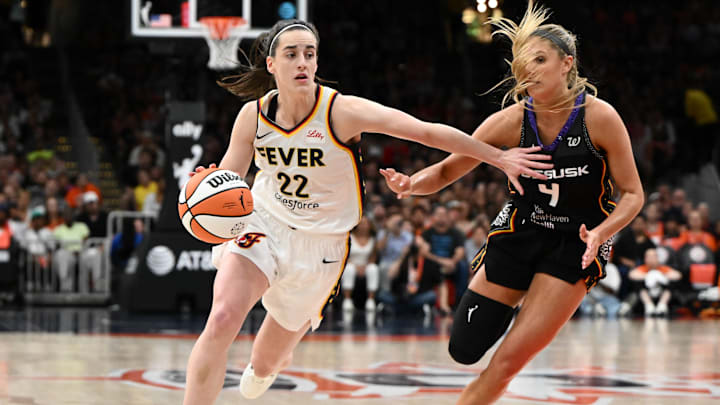Caitlin Clark is the best second-year player in the WNBA if we're talking solely about skill, but injuries have hampered Clark this season. If we're ranking second-year players based on 2025 contributions, has Clark been the best second-year player this year?
Maybe! You'll have to read on for a definitive answer here, because I'm not just going to give it away.
Let's rank the top five second-year WNBA players based only on this season. (Apologies to Cameron Brink, who just hasn't played enough this year to qualify even if she's a top-five second-year player going forward.)
5. Kamilla Cardoso - Chicago Sky
Last year, there was plenty of argument about who Chicago's best rookie was, and Kamilla Cardoso had a strong argument for that role.
In 2025, it has become clear that Angel Reese is the more important player for the Sky, but that shouldn't discredit what Cardoso is capable of. She's top 10 in the league in rebounds despite sharing the floor with the league's best rebounder, and she's been effective inside, ranking sixth in the league in field goals made from the restricted area.
4. Rickea Jackson - Los Angeles Sparks
The pre-draft read on Rickea Jackson was that she had the talent to be the best player in her class, but had struggled to harness that talent and felt just as likely to bust.
A year and a half in, we can say two things definitively. First, Jackson isn't going to be the best player from the 2024 draft class. Second, she's also not going to be a bust.
Jackson will need to improve her efficiency if she wants to be an elite WNBA player, but she's capable of getting you buckets when you need them and has been a key part of the Sparks making a recent playoff push.
3. Leonie Fiebich - New York Liberty
It can be tough to compare Leonie Fiebich to the two players that will follow her in the rankings, because her role is just entirely different. However, she plays her role so well that I had no hesitation putting her ahead of Cardoso and Jackson.
Fiebich is shooting 54.5 percent from the floor, the best mark of any second-year player. Sure, some of that comes from the fact she's on a team where the defensive pressure is applied basically everywhere else but on her, but she still has to make the shots.
2. Angel Reese - Chicago Sky
Look, you knew when you opened this article who the top two would be. I'm going to keep this section short so that you can keep reading on and see some of the direct comparison between Reese and Clark in the next section, but I will say that in Reese's favor, she ranks second among second-year players in points and first in rebounds.
And you can put aside that whole "me-bounds" argument, which is, quite frankly, an ignorant thing to argue. Reese isn't just someone who gets her own offensive boards. Her 8.7 defensive rebounds per game lead all second-year players, and she's shown major growth as a playmaker, with her 3.6 assists per game ranking second among second-year players
1. Caitlin Clark - Indiana Fever
That's right. Despite missing time, Clark still ranks as the top second-year player because of what she's done on the court.
For one, she's been a positive on the floor in a way a lot of the other second-year players haven't been. Indiana's net rating is 6.8 points per 100 possessions better with Clark on the floor. Chicago is 1.5 points per 100 possessions worse with Reese on the floor.
Now, that isn't the only factor here. Clark leads all second-year players in scoring and assists per game while ranking third in rebounds despite being a guard. She warps the floor when she's out there in a way that no other WNBA player does.
Funnily enough, Clark and Reese are actually right beside each other in one of the only publicly available WNBA advanced metrics, Positive Residual's Estimated Contribution. Neither ranks high in the metric, but part of that for Clark is that she's missed so much time. Clark ranks 48th and Reese 49th, with only one second-year player ahead of either, which is Fiebich at 26th.
